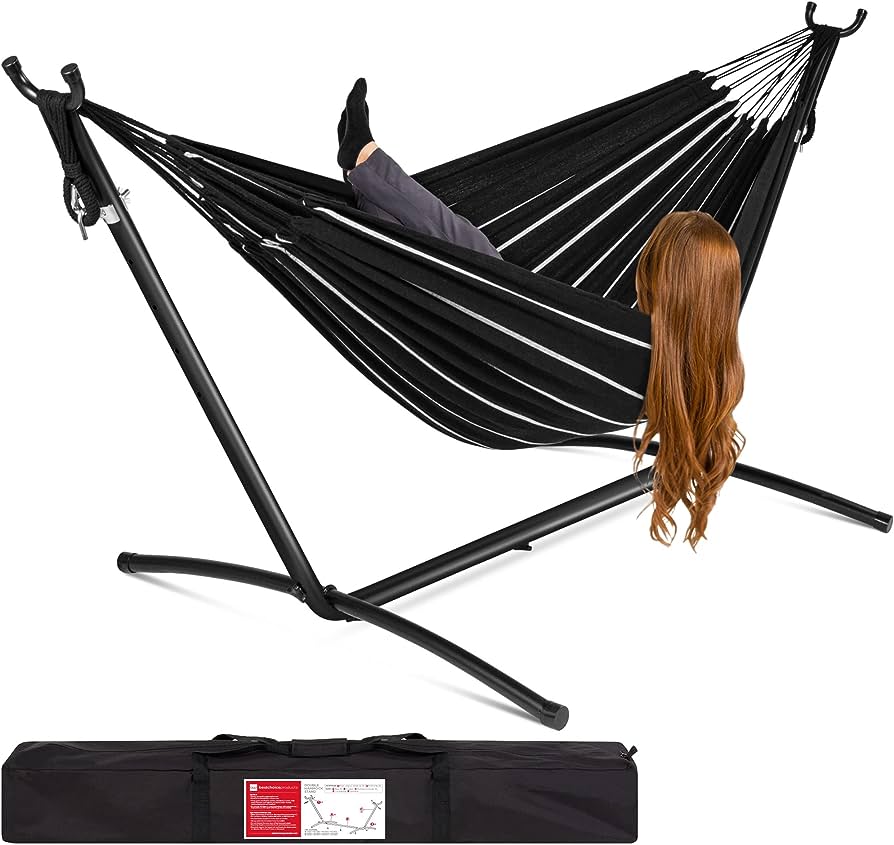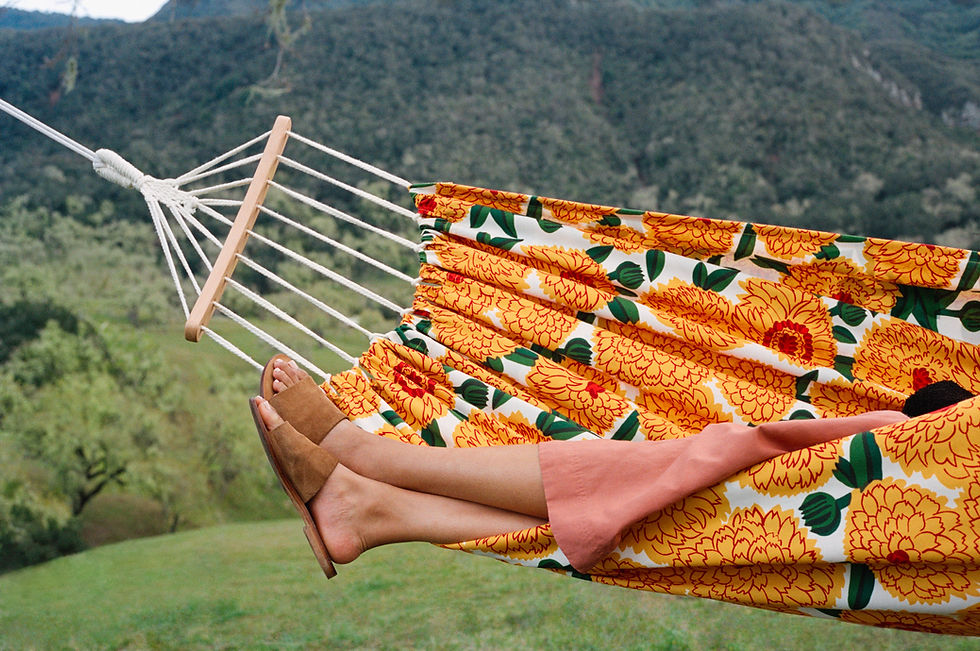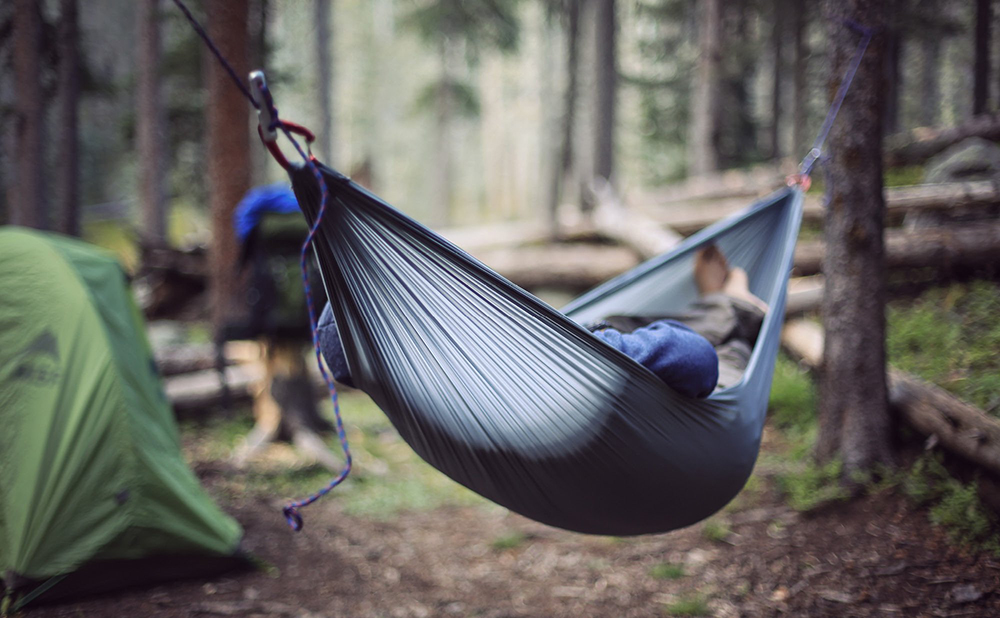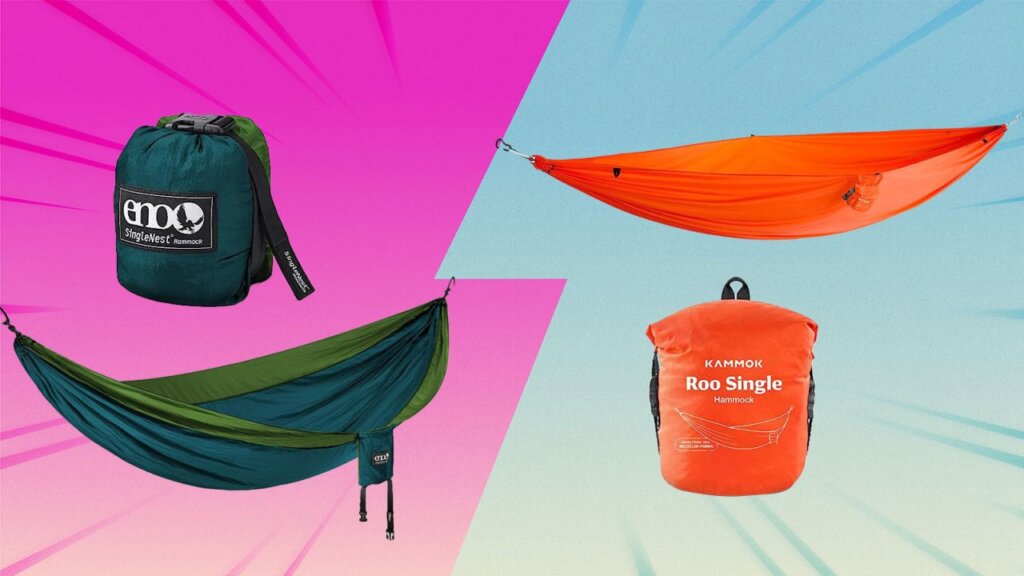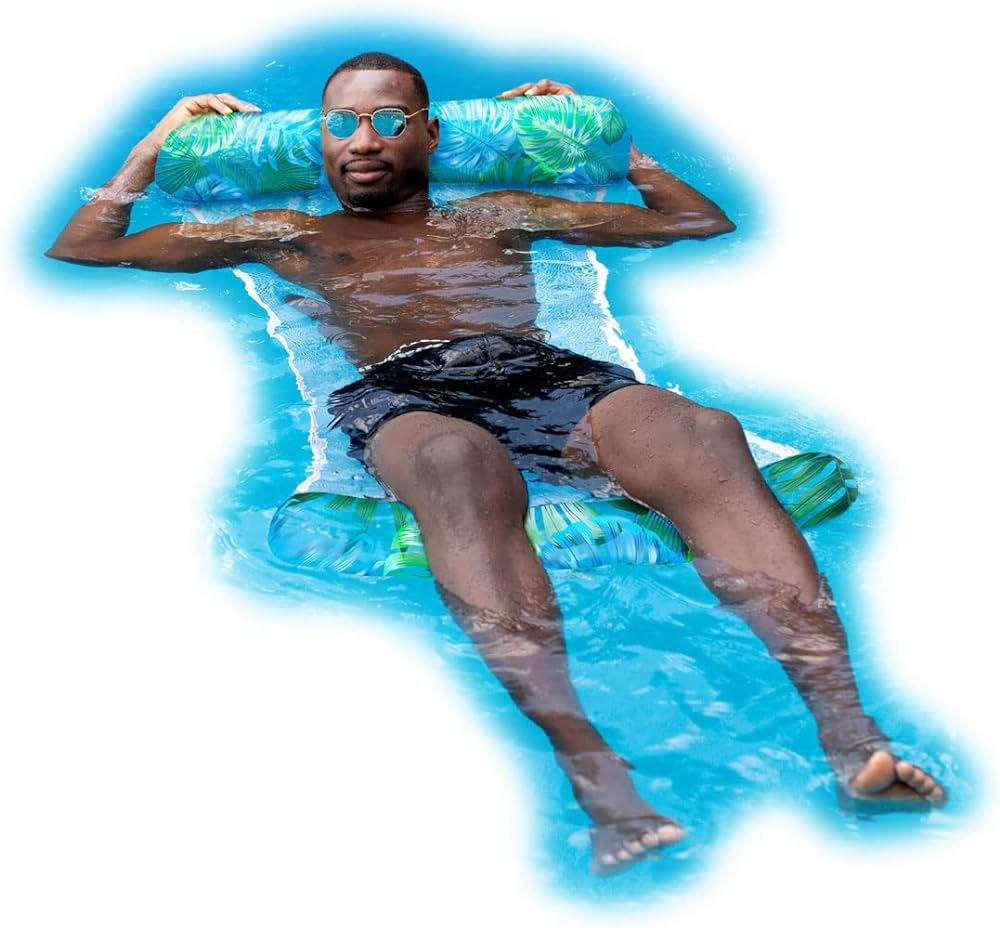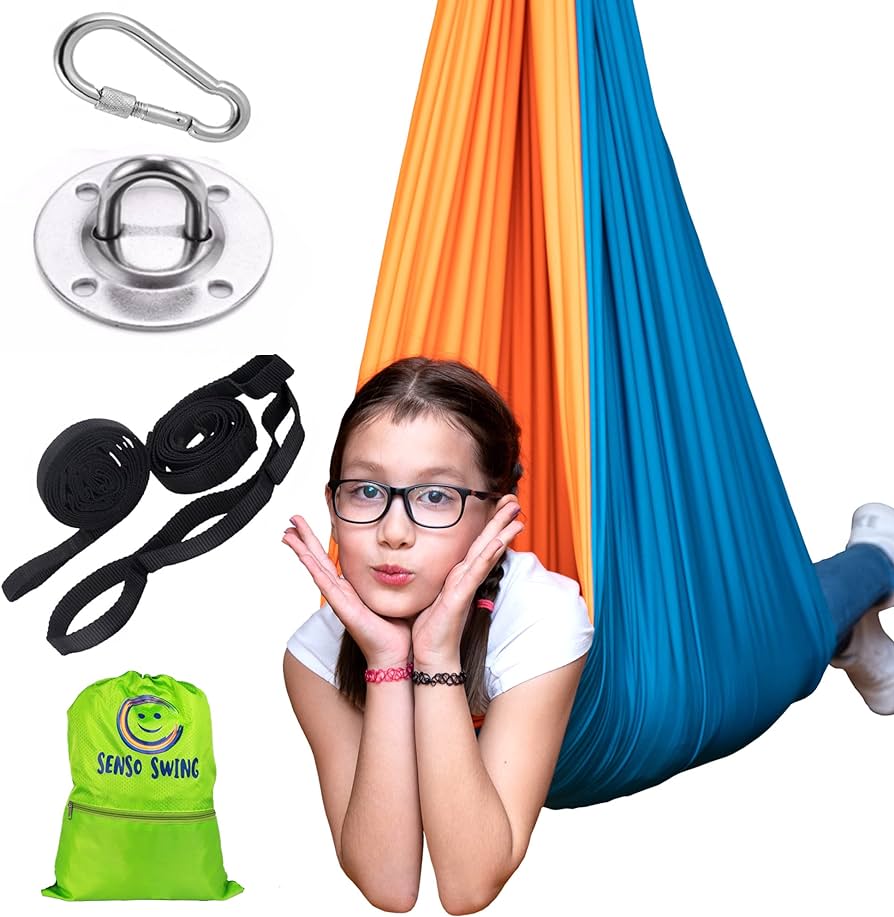- 8 Airplane Footrest Hammock!Travel comfortably - October 9, 2023
- top 7 Pool Float Water Hammock for a Relaxing Summer - October 9, 2023
- top 5 Space SaverSingle Hammock Stand Maximize Comfort and Space - October 9, 2023
In general, fabric hammocks are better than rope hammocks due to their strength, durability, and variety of materials and colors available.
Cotton Vs. Polyester: Choosing The Perfect Hammock Material
When it comes to choosing the perfect hammock material, there are two main options to consider – cotton and polyester. Both materials have their own unique features and benefits, making it important to understand the pros and cons of each. In this article, we will delve into the advantages and disadvantages of cotton and polyester hammocks, as well as key factors to consider when making your decision.
Pros And Cons Of Cotton Hammocks
Pros:
- Comfort: Cotton hammocks are soft, supportive, and incredibly comfortable. They provide a cozy and relaxing place to unwind.
- Breathability: Cotton is a highly breathable material, allowing for excellent airflow while you relax.
- Natural and Eco-Friendly: Cotton is a natural fiber and is biodegradable, making it a great choice for those who prioritize sustainability.
Cons:
- Susceptible to Weathering: Cotton hammocks are more prone to damage from weather conditions such as rain, humidity, and UV exposure. They may require more frequent maintenance and care.
- Longer Drying Time: Cotton takes longer to dry compared to polyester, especially after being exposed to moisture. This can be a disadvantage if you live in a humid climate or if your hammock gets wet often.
- Less Resistant to Mold and Mildew: Due to its organic nature, cotton hammocks can be more susceptible to mold and mildew growth if not properly cared for.
Pros And Cons Of Polyester Hammocks
Pros:
- Durability: Polyester hammocks are more resistant to weather conditions, making them a great choice for outdoor use. They are less likely to fade, mold, or deteriorate over time.
- Quick Drying: Polyester dries faster than cotton, making it ideal for areas with high humidity or frequent rain.
- Low Maintenance: Polyester hammocks require minimal upkeep and are easy to clean. They can withstand regular use without losing their shape or integrity.
Cons:
- Less Breathable: Polyester is not as breathable as cotton, which means it may trap heat and moisture, leading to discomfort during hot weather.
- Less Natural Feel: Polyester has a synthetic feel compared to the soft and natural texture of cotton. Some people may prefer the organic touch of cotton.
- Environmental Impact: Polyester is a synthetic material made from non-renewable resources, which may not appeal to eco-conscious consumers.
Factors To Consider When Choosing Between Cotton And Polyester
When deciding between cotton and polyester hammocks, it’s essential to consider the following factors:
- Climate: If you live in a humid or rainy climate, polyester may be a better choice due to its moisture-resistant properties.
- Comfort vs. Durability: Cotton offers superior comfort, while polyester provides increased durability. Consider which feature is more important to you.
- Long-Term Use: If you plan to use your hammock frequently and in various weather conditions, polyester’s durability and low maintenance may be advantageous.
- Sustainability: Cotton is a natural and eco-friendly choice, while polyester is synthetic and has a higher environmental impact.
By considering these factors and understanding the pros and cons of cotton and polyester hammocks, you can make an informed decision that aligns with your needs and preferences.
Comparing The Comfort And Support Of Fabric And Rope Hammocks
When it comes to choosing the perfect hammock, comfort and support are two crucial factors to consider. Fabric and rope hammocks are two popular options, each offering unique benefits. In this article, we will compare the comfort and support provided by these hammock types to help you make an informed decision.
The Comfort Of Fabric Hammocks
Fabric hammocks are known for their exceptional comfort. Made from materials such as cotton or nylon, these hammocks offer a soft and supportive sleeping surface. The fabric molds to your body, providing a cozy and relaxing experience. The breathable nature of fabric helps to keep you cool and comfortable, making fabric hammocks ideal for lounging or napping on a warm day.
The Support Of Rope Hammocks
Rope hammocks, on the other hand, provide a different type of support. Made from sturdy ropes, these hammocks offer a firmer and more structured sleeping surface. The ropes distribute your weight evenly, providing adequate support for your body. The open weave design of rope hammocks also allows for better air circulation, making them suitable for hot and humid climates.
Which Hammock Type Is More Suitable For Sleeping?
When it comes to sleeping, both fabric and rope hammocks can provide a comfortable experience. However, some individuals may find fabric hammocks more suitable for sleeping due to their softer and more cushioned surface. The fabric conforms to your body shape, reducing pressure points and promoting a restful sleep.
On the other hand, rope hammocks offer a firmer sleeping surface that may be preferred by those who prefer a more supportive hold. The open weave design of rope hammocks also allows for better airflow, ensuring a cooler and more comfortable sleeping environment.
In conclusion, the choice between fabric and rope hammocks ultimately depends on your personal preferences and needs. If you prioritize comfort and prefer a softer surface for sleeping, a fabric hammock may be the better option for you. However, if you value firm support and breathability, a rope hammock might be the more suitable choice. Consider your sleeping preferences, climate, and desired cushioning level to make the best decision for your hammock needs.
Durability And Longevity: Fabric Vs. Rope Hammocks
The Durability Of Fabric Hammocks
Fabric hammocks are known for their durability and strength. They are made from high-quality materials such as polyester or nylon, which are resistant to wear and tear. This makes fabric hammocks more suitable for long-term use, especially in outdoor environments where they are exposed to harsh weather conditions.
One of the main advantages of fabric hammocks is their resistance to UV rays. The fabric is typically treated to protect against fading and damage caused by the sun’s rays. This means that even after extended exposure to sunlight, fabric hammocks will maintain their color and structural integrity.
Additionally, fabric hammocks are less prone to damage from moisture compared to rope hammocks. The fabric used in these hammocks is often quick-drying, which prevents the growth of mold and mildew. This makes fabric hammocks ideal for humid or coastal areas where rope hammocks may be more susceptible to damage.
The durability of fabric hammocks is further enhanced by their construction. They are usually double-stitched or reinforced at stress points, ensuring that the hammock can withstand heavy use without tearing or fraying. The materials used in fabric hammocks are also designed to be resistant to pilling and snagging, which helps maintain their appearance and prolong their lifespan.
The Longevity Of Rope Hammocks
Rope hammocks have a distinct aesthetic appeal and can enhance the visual appeal of any outdoor space. However, when it comes to longevity, rope hammocks may not be as durable as fabric hammocks.
Rope hammocks are typically made from natural fibers such as cotton or polyester rope. While these materials have their advantages, they are more susceptible to damage from the elements and can deteriorate over time.
Exposure to moisture, humidity, and UV rays can cause rope hammocks to weaken and become more prone to fraying or breaking. The natural fibers used in rope hammocks may also absorb moisture, leading to the growth of mold and mildew if not properly cared for.
Although there are synthetic rope options available that are more resistant to weathering and mold, they may not have the same traditional look and feel as natural rope hammocks.
It’s important to note that the lifespan of rope hammocks can be prolonged with proper maintenance and care. Regular cleaning and storing in a dry place when not in use can help prevent damage and extend the life of a rope hammock.
Which Hammock Type Is More Suitable For Long-term Use?
When considering durability and longevity, fabric hammocks are generally more suitable for long-term use compared to rope hammocks. Their sturdy construction, resistance to UV rays and moisture, and overall durability make them a reliable option for those looking to invest in a hammock for long-term enjoyment.
However, it’s important to consider personal preferences and aesthetic factors when choosing between fabric and rope hammocks. Rope hammocks can offer a classic, timeless look that may be more appealing to some individuals, despite their potentially shorter lifespan.
Ultimately, the decision between fabric and rope hammocks depends on individual needs and preferences. Both options have their advantages and can provide a comfortable and relaxing outdoor experience. Whether you prioritize durability or aesthetic appeal, there is a hammock out there that will suit your long-term needs.
Maintenance And Care: Keeping Fabric And Rope Hammocks In Top Condition
Cleaning And Washing Fabric Hammocks
Fabric hammocks require regular cleaning and washing to keep them in top condition. Follow these steps to ensure your fabric hammock remains clean and fresh:- Start by removing any loose debris or dirt from the hammock using a soft brush or cloth.
- Fill a bucket or large basin with warm water and add a mild detergent.
- Dip a soft cloth or sponge into the soapy water and gently scrub the fabric hammock, paying extra attention to any stained areas.
- Rinse the hammock thoroughly with clean water to remove any soap residue.
- Hang the hammock in a well-ventilated area to air dry completely before using it again.
Maintaining And Preserving Rope Hammocks
Rope hammocks require special care to maintain their quality and prolong their lifespan. Here are some maintenance tips for rope hammocks:- Inspect the rope hammock regularly for any signs of wear or fraying. If you notice any damage, repair it promptly to prevent further deterioration.
- Apply a coating of varnish or sealant to the wooden spreader bars to protect them from moisture and prolong their lifespan.
- Store your rope hammock indoors during the winter months or when not in use to prevent exposure to harsh weather conditions that can cause damage.
- Avoid leaving your rope hammock exposed to direct sunlight for extended periods as it can weaken and fade the ropes.
- Periodically tighten the knots on your rope hammock to ensure a secure and comfortable experience.
Tips For Prolonging The Lifespan Of Both Hammock Types
Whether you have a fabric or rope hammock, following these tips will help prolong their lifespan and keep them in top condition:- Regularly inspect your hammock for any signs of damage and address them promptly.
- Avoid leaving your hammock exposed to harsh weather conditions for prolonged periods.
- Keep your hammock clean by removing debris and regularly washing it according to the recommended instructions.
- Properly store your hammock when not in use, preferably indoors or in a protective cover to prevent damage from the elements.
- Consider using a hammock stand or tree straps for added stability and to minimize strain on the hammock.
- Avoid placing excessive weight on your hammock to prevent stretching or breaking of the ropes or fabric.
Weather Resistance: How Fabric And Rope Hammocks Perform Outdoors
When it comes to choosing a hammock for outdoor use, considering weather resistance is essential. You want a hammock that can withstand various weather conditions and offer long-lasting durability. In this article, we will discuss how fabric and rope hammocks perform outdoors in terms of weather resistance.
Fabric Hammocks And Their Ability To Withstand Various Weather Conditions
Fabric hammocks are known for their versatility and ability to withstand diverse weather conditions. They are typically made from materials like polyester or nylon, which offer excellent resistance to UV rays, rain, and wind. These hammocks are often treated with weather-resistant coatings, further enhancing their durability.
Key Features of Fabric Hammocks:
- Resistance to UV rays, ensuring color and fabric longevity
- Water-resistant properties that protect against moisture and rain
- Wind resistance, preventing the hammock from easily tearing or getting damaged
- Quick drying ability, allowing the hammock to be used shortly after exposure to rain
Rope Hammocks And Their Resistance To Humidity, Mildew, And Mold
Rope hammocks, on the other hand, offer their unique set of advantages when it comes to resistance against humidity, mildew, and mold. While some people may assume that rope hammocks are less durable, certain types of ropes, like DuraCord, are specifically designed to resist environmental factors that can lead to mildew and mold growth.
Key Features of Rope Hammocks:
- Resistance to humidity, preventing ropes from absorbing excess moisture
- Anti-mildew and anti-mold properties, ensuring the hammock stays fresh and clean
- DuraCord ropes that are specifically engineered for outdoor use and enhanced durability
Which Hammock Type Is More Suitable For Outdoor Use?
Both fabric and rope hammocks have their unique strengths when it comes to weather resistance. Fabric hammocks offer excellent resistance to UV rays, rain, and wind, making them a great choice for areas with harsh weather conditions. On the other hand, rope hammocks, particularly those made with DuraCord, provide superior resistance to humidity, mildew, and mold growth.
In conclusion, when deciding which type of hammock is more suitable for outdoor use, it primarily depends on the specific weather conditions and preferences of the user. Fabric hammocks are ideal for those seeking excellent UV and weather resistance, while rope hammocks, especially those made with DuraCord, excel in resisting humidity and preventing mildew and mold growth.

Credit: www.outdoorgearlab.com
Frequently Asked Questions Of Is Fabric Or Rope Hammock Better
What Is The Best Material For A Hammock?
Cotton is the best material for a hammock due to its softness, supportiveness, and comfort. It is a popular choice because of its ability to provide a comfortable sleeping experience. Additionally, cotton hammocks are more flexible compared to polyester options.
Which Is Better Cotton Or Polyester Rope Hammock?
Cotton rope hammocks are more flexible and comfortable, while polyester rope hammocks are less susceptible to humidity, mildew, and mold. Nylon is a good option for humid climates. Cotton hammocks are soft and breathable, while nylon hammocks are more durable.
Fabric hammocks are stronger and more durable than rope hammocks but better suited for cooler weather.
What Type Of Hammock Is Most Comfortable?
Cotton hammocks are the most comfortable due to their softness and breathability. They provide a cozy and supportive experience for users. Nylon hammocks are more durable and resistant to weathering, but cotton offers a more comfortable relaxation.
Is A Cotton Or Nylon Hammock Better?
Cotton hammocks are more comfortable, while nylon hammocks are more durable and weather-resistant. Cotton is absorbent and dries quickly, making it better for beach use. Nylon can become hot in the sun. Consider your needs and climate when choosing between cotton and nylon hammocks.
What Is The Best Material For A Hammock?
Cotton is the staple material of the hammock market. It has many great properties that make it one of the most popular materials for making hammocks.
Which Is Better Cotton Or Polyester Rope Hammock?
Rope hammocks are either cotton or polyester, and each has its advantages. Cotton rope hammocks are more flexible than polyester, but polyester styles are less susceptible to humidity, mildew, and mold.
What Type Of Hammock Is Most Comfortable?
Cotton hammocks are soft and breathable, making them comfortable to snuggle up in. Canvas hammocks are durable and comfortable, suitable for both indoor and outdoor spaces.
Conclusion
Both fabric and rope hammocks have their advantages. Cotton fabric hammocks are comfortable and durable, while rope hammocks offer flexibility and a traditional aesthetic. Polyester fabric hammocks are less susceptible to humidity and mold, making them a good choice for humid climates.
Ultimately, the best material for a hammock depends on your personal preferences and the climate you live in. Consider factors such as comfort, durability, and weather resistance when choosing between fabric and rope hammocks.

